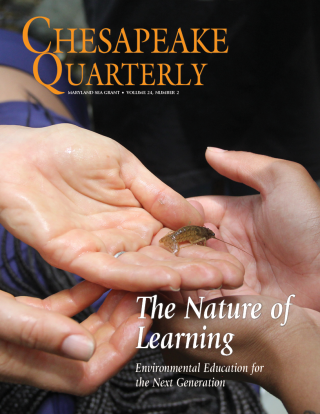Knauss legislative fellowships in Congress help build careers — and they're fun and educational. See our video and fact sheet for details.
The Maryland Sea Grant Bookstore is closed for the winter holidays from Monday, December 15th to Friday, January 5th and will not be taking orders during that time.
Rp/P-101
Developing a Research Program: The Effects of SAV Diversity on Restoration Success
Principal Investigator:
Katharina A. M. EngelhardtStart/End Year:
2002 - 2003Institution:
Appalachian Laboratory, University of Maryland Center for Environmental ScienceTopic(s):
- Submerged Aquatic Vegetation
Description:
Submersed aquatic macrophytes (SAY) are a critical component of the Chesapeake Bay estuary ecosystem and have been targeted for restoration under the Chesapeake 2000 Agreement (C2K) to achieve historic (1930's) SAV distributions. While SAV restoration projects are currently underway in all parts of the Chesapeake Bay ranging from the freshwater upper reaches to seawater in the lower reaches, little is still known about effective strategies that enhance restoration success of SAV. The proposed research program would evaluate the success of past restoration projects and assess the effectiveness of planting diverse SAV communities to enhance restoration success throughout the Chesapeake Bay. To develop such a program, the short-term objectives for Sea Grant's program development funds will be: 1. to assess the success of past SAV restoration efforts in the Chesapeake Bay watershed; 2. to propagate six SAV species common to the Chesapeake Bay and study phenotypic diversity of each species; 3. to conduct an experiment exploring optimum planting depth for six SAV species in the upper Bay; and 4. to develop collaborations with colleagues at Horn Point Laboratory (HPL) and at the Virginia Institute of Marine Science (VIMS).





